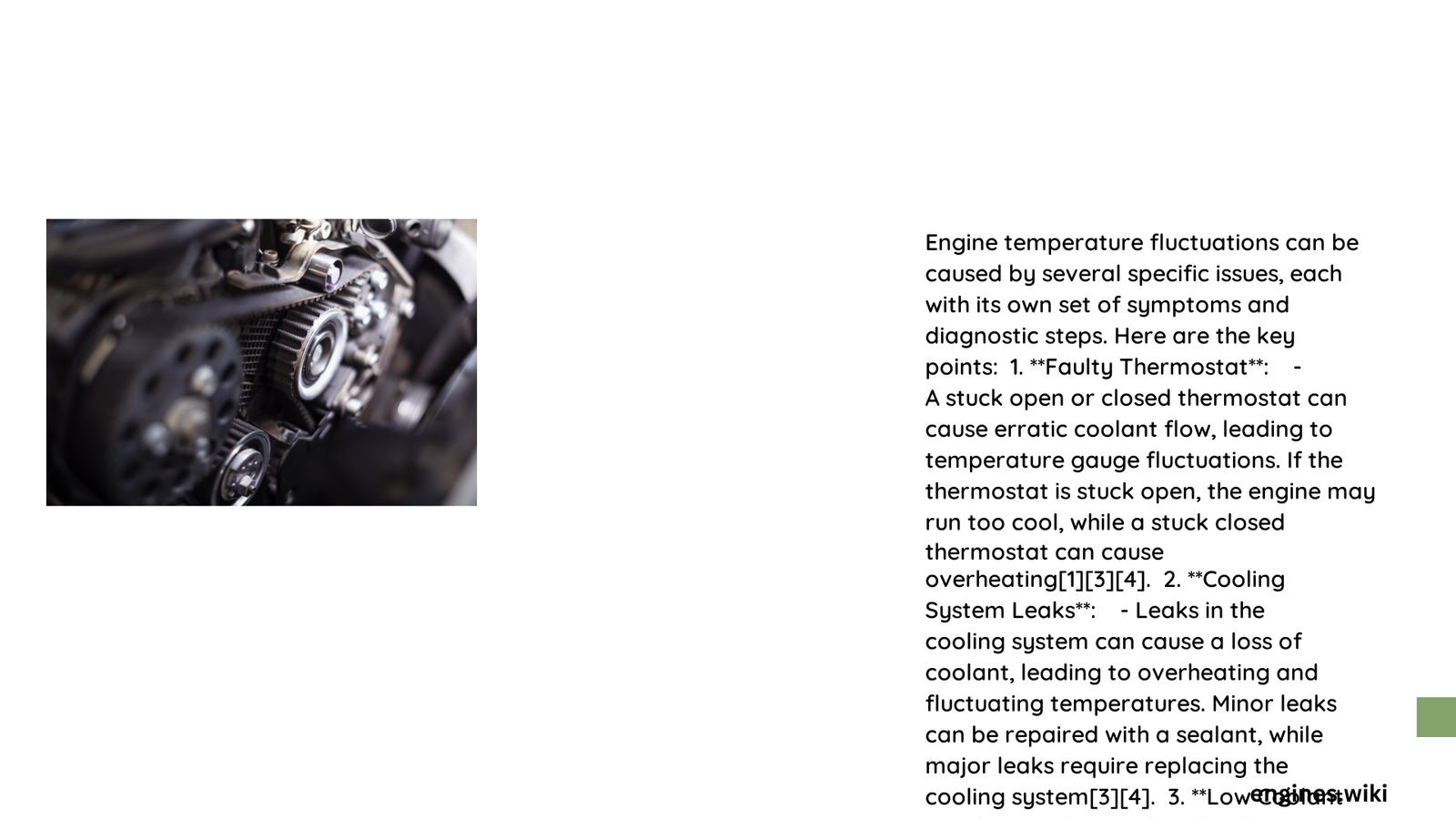Engine temperature fluctuations can be a complex and potentially dangerous automotive issue that signals underlying mechanical problems. When your vehicle’s temperature gauge unexpectedly rises and falls, it indicates potential cooling system failures, sensor malfunctions, or critical component wear that could lead to significant engine damage if left unaddressed. Understanding these variations requires a systematic approach to diagnosis and resolution.
What Causes Engine Temperature to Fluctuate?
Why Do Thermostat Problems Impact Engine Temperature?
A thermostat acts as a critical temperature regulation valve in your vehicle’s cooling system. When malfunctioning, it can cause significant temperature inconsistencies:
- Stuck Open Position: Prevents proper temperature buildup
- Stuck Closed Position: Blocks coolant circulation
- Partial Obstruction: Creates unpredictable temperature patterns
How Do Coolant Levels Affect Temperature Stability?
| Coolant Level | Temperature Impact | Risk Level |
|---|---|---|
| Low Coolant | High Fluctuation | Critical |
| Proper Level | Stable Temperature | Minimal |
| Contaminated | Inconsistent Flow | Moderate |
Key Coolant Maintenance Strategies
- Regular level checks
- Annual system flush
- Use manufacturer-recommended coolant
- Inspect for potential leaks
What Role Do Water Pumps Play in Temperature Control?
Water pumps are the heart of your cooling system, responsible for circulating coolant throughout the engine. When they fail, temperature becomes highly unpredictable:
- Bearing Wear: Reduces pumping efficiency
- Impeller Damage: Disrupts coolant flow
- Seal Deterioration: Creates potential leakage points
Can Electrical Systems Cause Temperature Fluctuations?
Electrical components significantly influence temperature monitoring:
- Faulty temperature sensors
- Wiring harness issues
- Ground connection problems
- Corroded electrical connections
Diagnostic Approaches for Engine Temp Fluctuations
Professional Diagnostic Steps
- Use advanced OBD2 scanning tools
- Perform pressure tests on cooling system
- Check electrical connections
- Inspect coolant quality and composition
- Evaluate thermostat functionality
Potential Repair Costs and Considerations
| Repair Type | Estimated Cost Range | Complexity |
|---|---|---|
| Thermostat | $100 – $300 | Low |
| Water Pump | $300 – $750 | Moderate |
| Full Cooling System Repair | $500 – $1200 | High |
Prevention and Long-Term Maintenance
Preventing engine temp fluctuations requires proactive maintenance:
- Schedule regular cooling system inspections
- Use high-quality coolant
- Replace components before complete failure
- Monitor temperature gauge consistently
- Address warning signs immediately
Technical Insights on Temperature Ranges
- Normal Operating Temperature: 195°F – 220°F
- Warning Zone: Above 240°F
- Critical Overheating: Exceeding 260°F
When to Seek Professional Help
Immediate professional intervention is recommended if you experience:
– Rapid temperature gauge movements
– Steam from engine compartment
– Persistent temperature warning lights
– Unusual engine performance changes
Conclusion

Understanding engine temp fluctuations requires technical knowledge, systematic diagnostics, and proactive maintenance. By recognizing early warning signs and implementing preventive strategies, vehicle owners can mitigate potential long-term engine damage.
